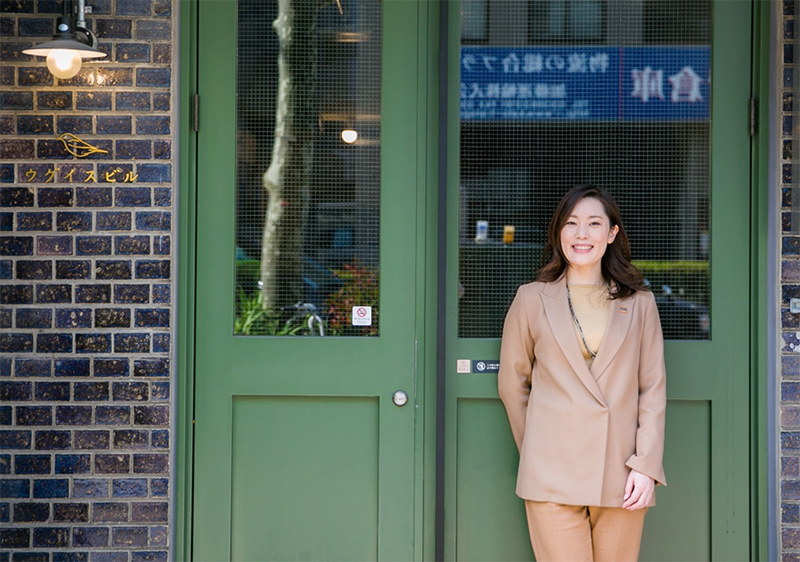
Project Name:Kuramae UGUISU BLDG certification PJ
City:Tokyo
Rating System:LEED O+M Existing Buildings
Last certified on: February 20, 2023
Certification level: Gold
Interviewee: Kaori Yoshida from Buildingmo Co., Ltd.
Interviewer: Green Building Japan Co-chair Junko Miyamoto
We had the honor of interviewing Ms. Kaori Yoshida, a distinguished expert from Buildingmo Co., Ltd., a renowned enterprise specializing in the meticulous revitalization of historic buildings. In our dialogue, Ms. Yoshida introduced us to the extraordinary Uguisu Building, an architectural masterpiece that boasts the prestigious LEED O+M Gold certification.
Buildingmo Co., Ltd. Kaori Yoshida (hereinafter called “Kaori”):
Certainly. The Uguisu Building which achieved the prestigious LEED O+M certification, is located in the Kuramae district of Tokyo. Situated along the Sumida River, this area has attracted considerable attention in recent years. The rejuvenation of old warehouses and storage spaces by young artists and imported shops has created a buzz reminiscent of Tokyo’s ‘Brooklyn’.
This is where our company operates. We specialize in the renovation of existing building and environmental certification consultancy. The transformation of this building into a model of excellence has been driven by our ownership of the project and our pursuit of certification, with the aim of enhancing both the value of the existing structures and the comfort of our tenants.
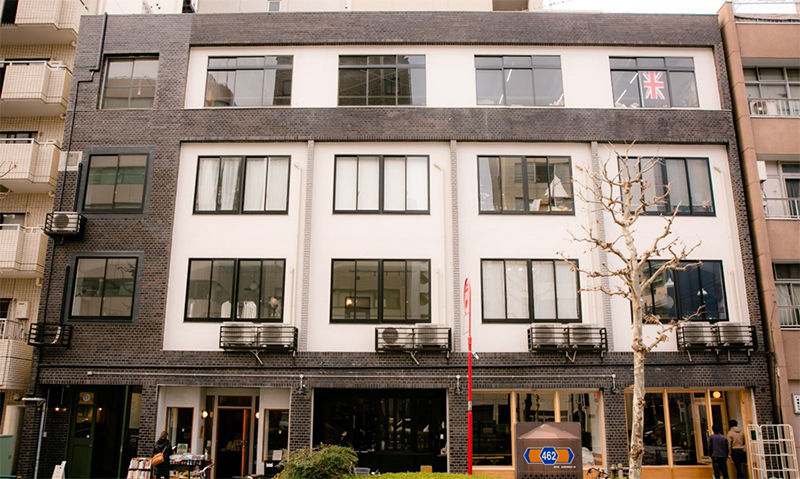
Junko:
Kuramae has become popular with trendy young people and boasts an array of stylish shops and cafes. As a 60-year-old existing building, could you provide insights into the strategic considerations and challenges you faced in preparing for LEED O+M certification?
Kaori:
Sure. Firstly, neither the common areas nor the individual units of the Uguisu Building were equipped with mechanical ventilation. There was a tenant demand for access to fresh outdoor air, and the urgency of the COVID-19 situation underscored the importance of ventilation. Hence, the timing was opportune for pursuing LEED certification.
Moreover, with regard to waste management, the absence of property management personnel for the Uguisu Building made it imperative to track waste emissions from each tenant. When we emphasized the benefits of improved air quality and tenancy in a LEED-certified building, all stakeholders cooperated wholeheartedly, for which we are very grateful.
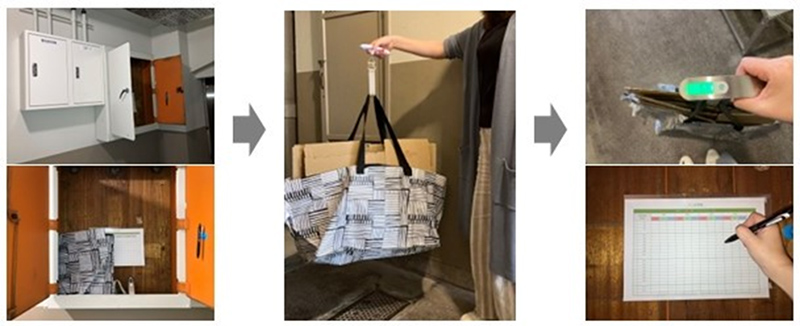
Junko:
Undoubtedly, tenant cooperation stands as a pivotal factor in attaining LEED O+M certification. Achieving certification requires collective efforts involving not only the building owner, but all stakeholders.
Kaori:
Indeed. When it comes to waste disposal, tenant collaboration is also essential for the management of plastic bottles, which requires special collection days. In larger buildings with dedicated property management teams, waste is usually dealt with within 24 hours, with waste sorting overseen by the management. In the Uguisu Building, however, tenants individually manage waste recycling schedules and measurements. This increases their sense of contribution to O+M practices.
Junko:
How have the tenants responded to the LEED certification initiative?
Kaori:
Many occupants of the Uguisu Building demonstrated a strong awareness of sustainability right from the initial briefing. They have been proactive in understanding the building design and the tasks required to achieve certification, recognizing that this pursuit enhances intrinsic value of the building. Going forward, we plan to conduct regular surveys with our tenants and look forward to receiving positive feedback on their comfort and satisfaction.
Junko:
Tenant buy-in is crucial. We’re also curious about the cost aspect that concerns everyone. Who covered the cost for this LEED O+M certification?
Kaori:
The initial costs were covered by our company. Our utilization of solar power to generate electricity has led to reduced operational costs. This, together with the increase in the value of the building and the absence of vacancies, also benefits the property owners. In the long term, this approach to cost saving proves advantageous.
Junko:
So, despite the initial investment, considering the added value and environmental benefits, it appears to be a judicious business decision.
Kaori:
Precisely. For tenants, although the responsibility for waste tracking has increased, but the rent remains the same. The living environment has become much more comfortable, which encourages more interactions between tenants. As part of the renovation, we also created a communal meeting space for tenants, featuring a conference table made with recycled solar panels.
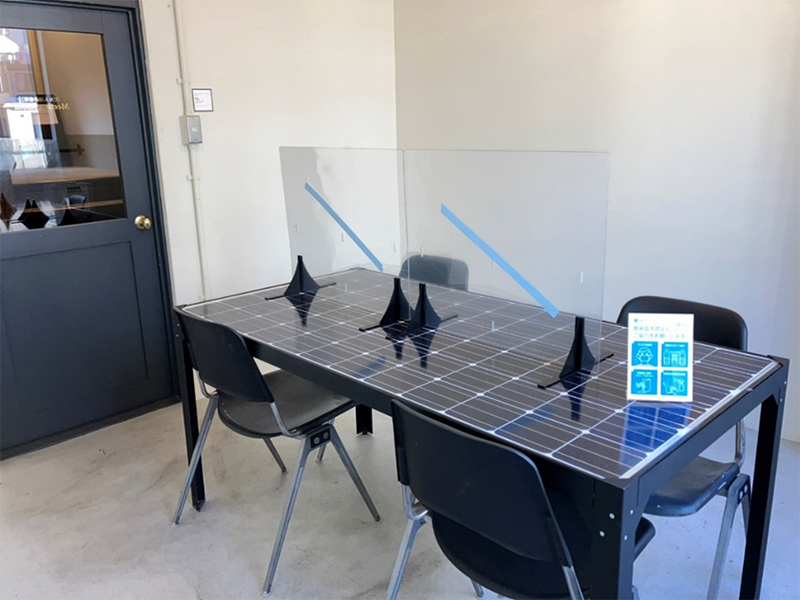
Junko:
That’s indeed innovative! I observed the seamless integration of historic aesthetics with modern renovation. The contemporary appreciation of vintage interior designs, with its harmonious balance of sophistication and practicality, is truly impressive – particularly exemplified in the design, including the washbasin.
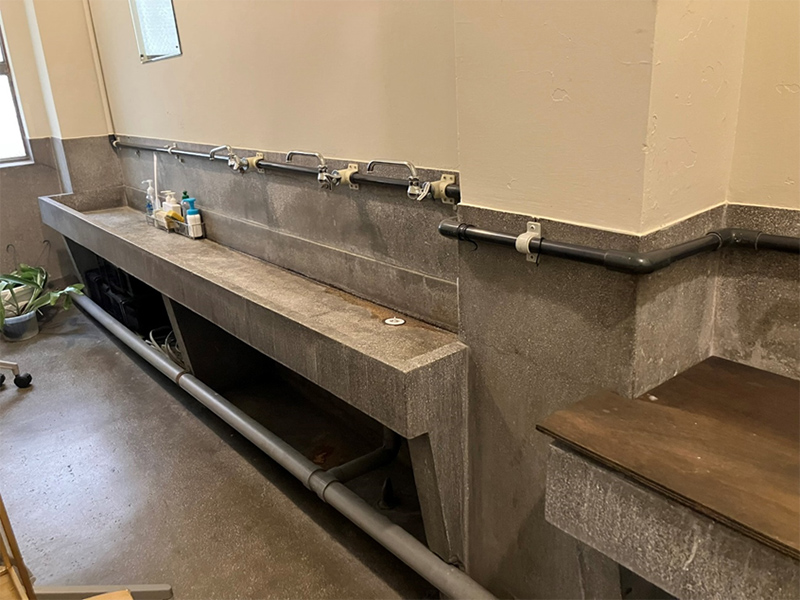
Kaori:
Maintaining cleanliness is our foremost priority in our renovation efforts. We believe that by adapting to contemporary needs while upholding a sense of cleanliness even in antiquity, people will develop an attachment and treat these elements with care. Such efforts are sustainable in themselves and contribute to the creation of a unique history that new buildings cannot replicate.
Junko:
We greatly appreciate your insights today. It’s enlightening to discover that even older buildings can attain LEED certification. We eagerly anticipate learning about more exceptional renovation cases in the future. Thank you!


